Frequently accessed paper is a big part of any household! The never-ending school projects and bills to pay is enough to drive you crazy. Add in other miscellaneous papers like warranty information to register for, free printables, coupons, and receipts, and it’s easy to see why paper clutter is such a big problem!
I consider frequently accessed paper to be the type of paperwork that you might need in a few days, but not necessarily right now. This was a common issue in my house because I love me some free printables! Mine, other bloggers, it doesn’t matter. I print them off and dig right in. But then they are left sitting in stacks around my home until I need to use them again.
The same goes for well-child checkup printouts; sometimes there is helpful information that I need to reference over the course of a week. With four kids, this paper clutter was starting to take over my home! Storing them in a home filing system isn’t practical because it’s too much work to access them when needed. So I came up with a system that would house them and make them easily accessible!
Today, we’re going over a few different ways that you can store these types of papers in your own home.
This is the final post in a series all about organizing your household paper. If you need to go back and check out some of the other posts, click one of the links below!
- How to Create an Effective Home Filing System
- The Ultimate Guide: Organizing Mail
- A Simple Solution for all that Incoming Paper
Now let’s get right into how to organize these frequently accessed papers!

This blog post contains affiliate links. This means if you make a purchase through one of these links, I may earn a small fee at no extra cost to you. Thanks for your support!
CONSIDER YOUR NEEDS
Ideally, you want your daily paperwork to be stored within easy reach so you can see everything that’s inside. For most of us, that means a paper organizer that sits on a flat surface, as opposed to hanging on the wall.
You will also probably need more than a few slots for different categories so the different types of paper don’t get jumbled together.
With that being said, here are a few different options of file organizers that you can use.
Acrylic File Folder Organizer
This file organizer can be laid horizontally, stood upright, or hung on the wall. The different tiers allow you to see everything at a glance. Click here to see it on Amazon.
Plastic File Organizer
This file organizer has room for more files and paperwork. This one works great for bigger families! Click here to see it on Amazon.

Hanging File Organizer
This is similar to the one that I have. The difference between this one and the previous two is that you can add hanging files so you can group folders or categories together. See it on Amazon.
There are a few other supplies you’ll need with your paper organizer.
✔ Hanging file folders have hooks that slide over a rail. Some organizers need them and others don’t.
✔ Manila file folders can be used inside of hanging files or you can use them by themselves. I like to use decorative file folders to make my paper organizers a little more pretty.
DETERMINE YOUR CATEGORIES
Once you’ve decided on a file organizer, next you’ll want to determine the different categories that you’ll need.
Everyone will have their own categories. They’re largely dependent on your lifestyle and personal interests.
I recommend flipping through papers that you frequently use and taking note of common themes.
You might find a wide variety of categories. Just do your best to group them together into some sort of category.
– Items that need to be taken action on
A field trip permission form, a warranty to register for, a letter to respond to, etc.
– School projects, homework, or artwork for each child
– Medical information for each family member
Insurance claims, well-child checkups you need to reference, prescriptions to fill, etc.
– Bills to pay
– Papers to save
Free printables, cheatsheets, coupons, etc.
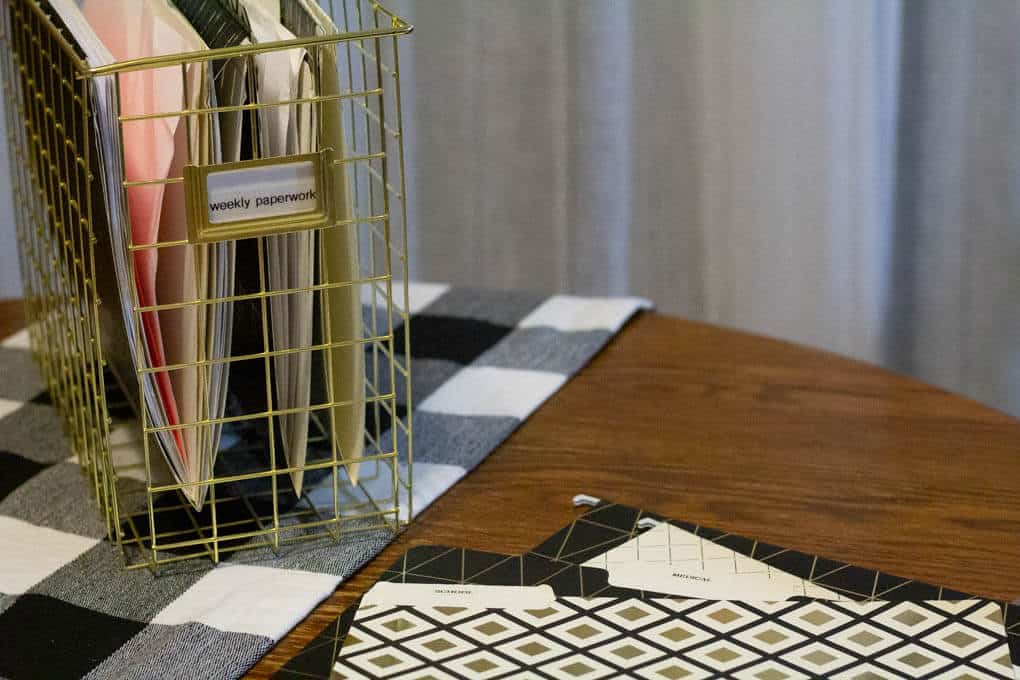
LABEL YOUR FOLDERS AND ADD YOUR PAPERS
Whether you have folders or hanging files or both, you’ll want to label them appropriately so you will know which papers go where.
If you don’t have a label maker, you can certainly use a sharpie or a black marker.
But don’t skip this step! Keeping your categories labeled and separate is a big reason why this paper system works so well!
Once they’re labeled, start adding your papers.
Gather up all of the papers that you use on a weekly basis and put them in the corresponding file.
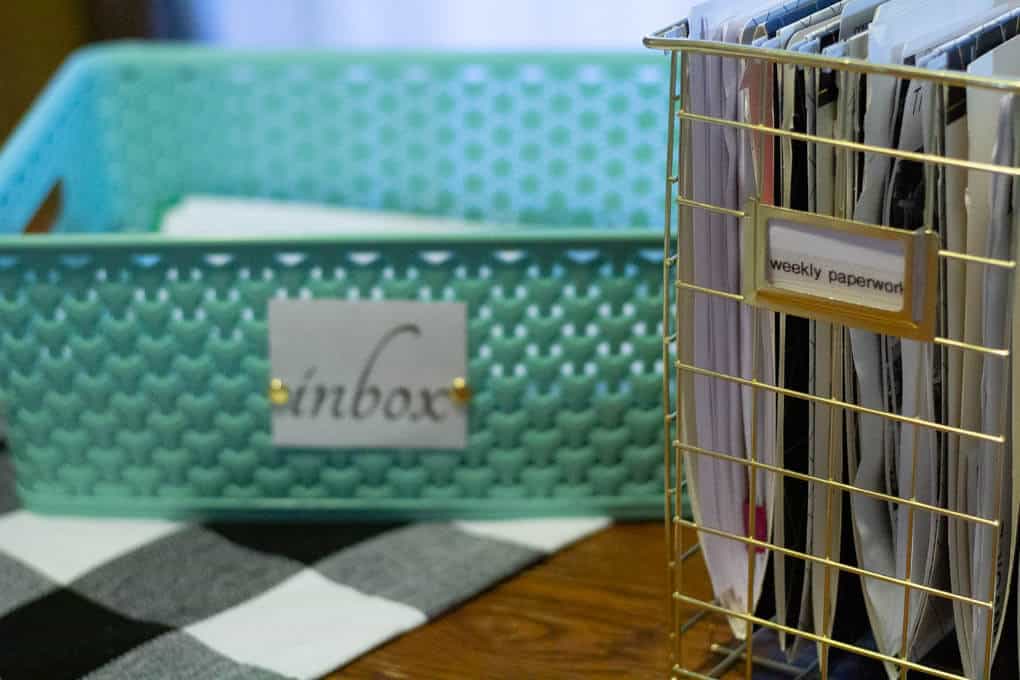
TIPS TO MAKE THIS WORK FOR YOU
There’s a couple of things you can do to make this system work well in your home.
– Avoid using your paper organizer for storage
As long as you are using the papers on a frequent basis, it’s okay to keep them in there.
But do your best to avoid adding things like take-out menus, receipts, recipes, etc.
– Process and sort the papers once a week
It can be easy to forget about some of the categories if you’re not using them frequently enough.
So make sure you sort through your paper organizer every so often. Clean out any papers that you’re not using anymore and add more categories if needed.
– Tell your family what your paper organizer is for
Make sure your kids know that your file sorter is not for incoming paper.
If they’re old enough, you can give them a designated folder for their school paperwork. But otherwise, let them know that it’s important information, just like in a filing cabinet.
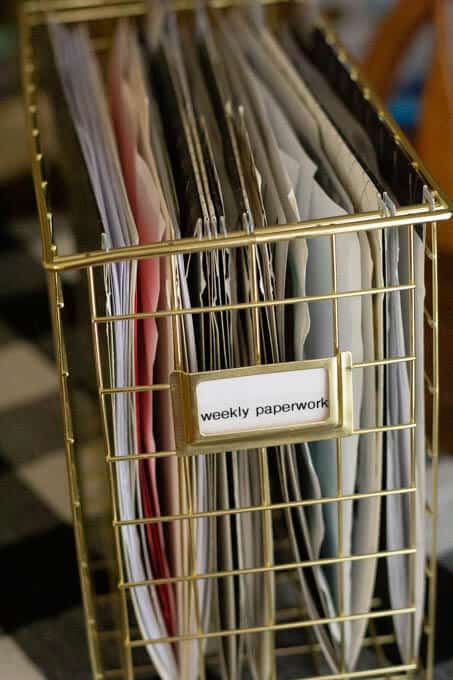
YOUR TURN
If you have a handful of papers that you need to access frequently, this system will be perfect for you!
Instead of leaving them in random piles around the house, you can keep them all together in one designated spot.
Here’s what you’ll need in order to set one up in your home:
- A file sorter that can stand on a flat surface
- Hanging files and/or decorative file folders
And that’s it!
With just a few supplies, you can have an organized system for all of your daily paperwork!
So get started organizing all of your paper. You’ll be so relieved to get rid of those paper piles on your kitchen counters! 😉
If you need help keeping track of your organizing projects, grab a copy of the home project planner!
Related posts
The Ultimate Guide: Organizing Mail
What to do With all that Incoming Paper
How to Create an Organized Filing System
35 Organizing Products You’ll Actually Use
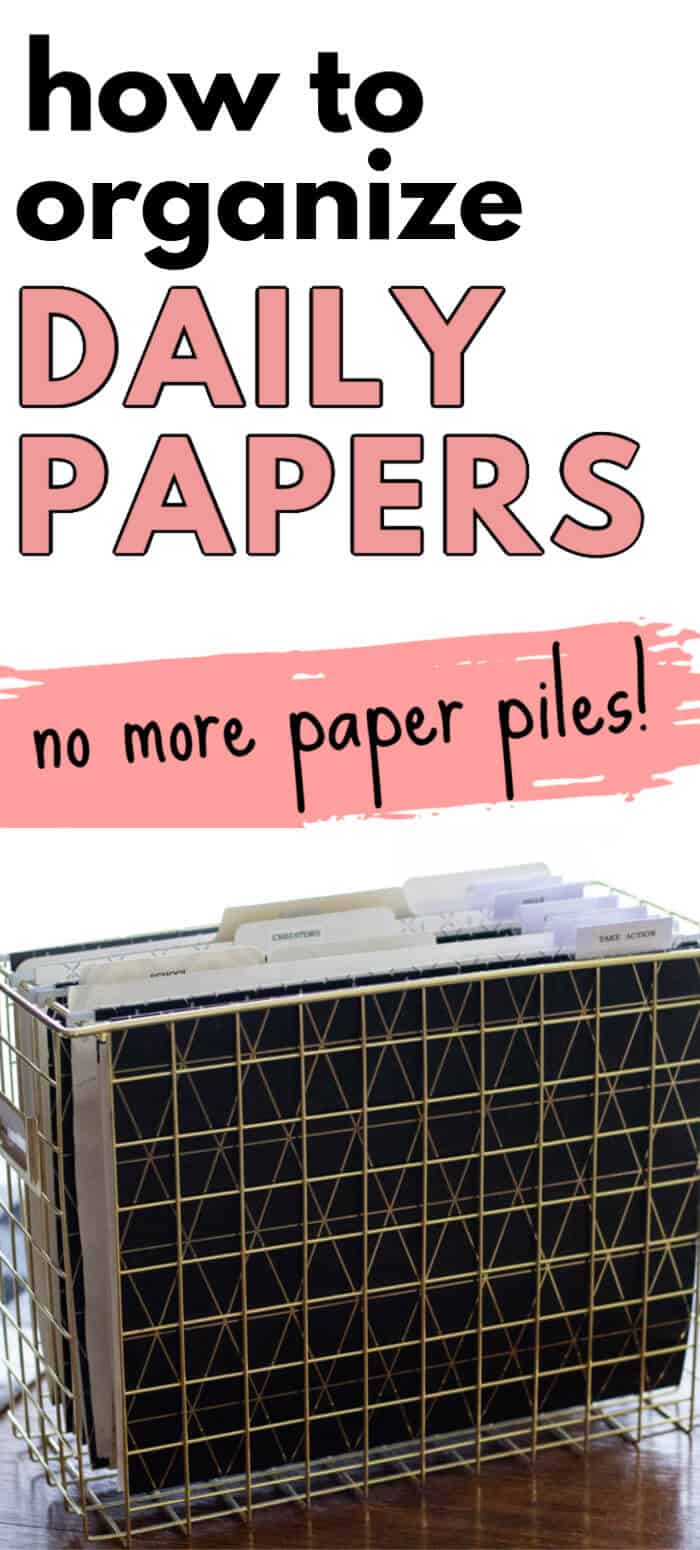
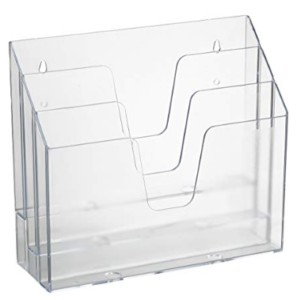
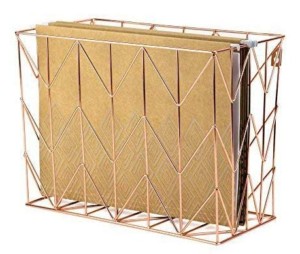

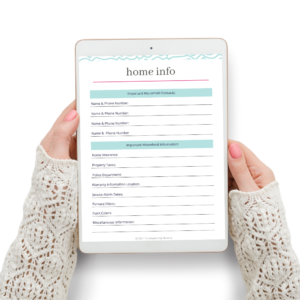

Leave a Reply
You must be logged in to post a comment.